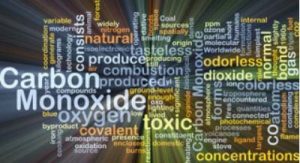 Carbon monoxide is a poisonous, colorless, odorless and tasteless gas, so it is impossible to detect without a monitor—unless you start feeling lightheaded and then it might be too late! According to the CDC, around 400 Americans die from CO every year, and around 50,000 people become sick or injured by CO in the US alone.
Carbon monoxide is a poisonous, colorless, odorless and tasteless gas, so it is impossible to detect without a monitor—unless you start feeling lightheaded and then it might be too late! According to the CDC, around 400 Americans die from CO every year, and around 50,000 people become sick or injured by CO in the US alone.
Why CO Is Deadly
Carbon monoxide has the chemical formula C-O because it consists of one carbon atom and one oxygen atom. So, how is such a simple molecule so deadly? It binds tightly with the hemoglobin in your blood, and the system that delivers oxygen to your cells cannot do its job. When CO displaces O in the blood, it deprives vital organs of oxygen. Symptoms that may present themselves can vary widely, but include headache, nausea, vomiting, confusion and bodily collapse. CO poisoning can result in irreversible brain and heart damage, as well as reproductive risk.
Where CO Is Present
Many industries produce CO as a byproduct, especially those that burn material contain carbon such as natural gas, gasoline, kerosene, oil, propane, coal, or wood. Forges, furnaces, and ovens produce CO but one of the most common sources of it is gas-powered vehicles with internal combustion engines. A few of the professions that may face risk of CO exposure include welders, mechanics, firefighters, forklift operators, marine terminal workers, customs inspector, police office and taxi drivers.
OSHA Exposure Limits
Physical symptoms such as nausea, headache, fatigue and dizziness can occur when CO is as low as 9 ppm. Physical symptoms can occur after 6-8 hours at 35 ppm, but the OSHA PEL per 8-hour day is 50 ppm. Over 400ppm results in physical symptoms in 1-2 hours, lack of consciousness in 2 hours and is fatal in 2-3 hours.
NOW YOU KNOW…ABOUT CO!
Download flyer: STOTW_1210_Carbon_Monoxide Download Spanish flyer: STOTW_1210_Carbon_Monoxide_esp

